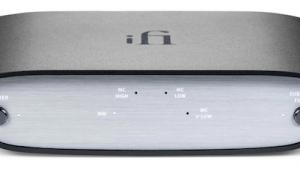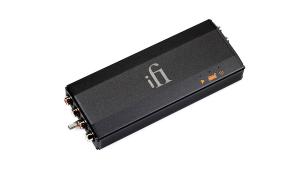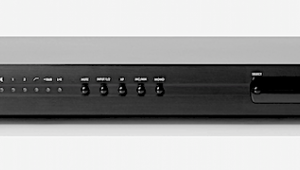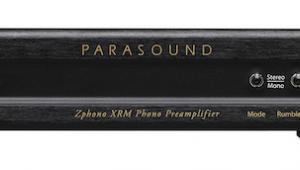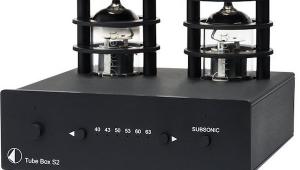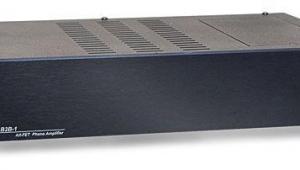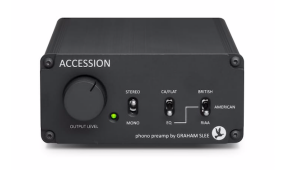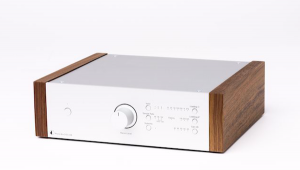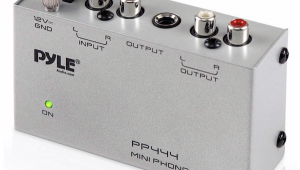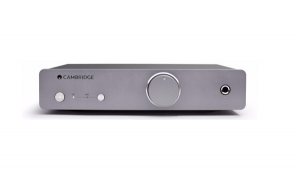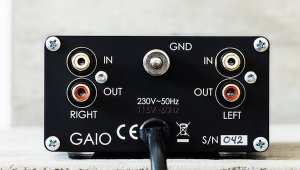Herron Audio VTSP-1 preamplifier & VTPH-1MC phono preamplifier Page 4
Listening: VTPH-1MC tube phono preamplifier
In order to get a handle on the Herron VTPH-1MC phono preamplifier without the added variable of the line stage, I first ran it through my reference Ayre K-1, and later compared it to both Ayre's built-in phono section and to the $6500 Audio Research Reference phono preamp that I reviewed in February. While the VTPH-1 MC inverts absolute polarity, so does the Ayre when run unbalanced, so I did not invert polarity at the speaker terminals. I also ran the VTPH-1MC unloaded at 47k ohms, though loading posts and resistors are provided. I used a variety of interconnects during my listening, including Yamamura 6000, XLO Reference, Electra Glide Tesla, and Wireworld Gold Eclipse. The phono preamp rested on three Walker Valid Points and resin/lead discs, all sitting on the Finite Elemente stand. Cartridges included the ultra-low-output (0.11mV) EMT TU2, the TU3 with Geyger stylus, and the Transfiguration Temper Supreme, Transfiguration Spirit, and Lyra Parnassus D.C.t.
Having just reviewed the ARC Reference, I'd hoped for no big sonic surprises when---following a Thor Audio Burn-In session---I first listened to the Herron. If there were any, then either the AR or the Herron would have to have some fundamental flaw. There weren't any when I lowered the Transfiguration Temper Supreme into the grooves of Janis Ian's Breaking Silence (Analogue Productions), which was the last thing I played through the ARC---not that the two phono stages sounded identical. The biggest difference in terms of overall presentation was the Herron's more forward nature: not brighter, just more forward, with impressively natural focus and clarity.
What separates a great phono section from the merely good? Dynamics, for one thing. The great phono sections never sound compressed, especially macrodynamically. The lesser but still good ones, like the Lehmann Black Cube, "letterbox" the sonic picture, though what's in that picture is still quite fine. The great phono sections I've heard manage to sound exuberant yet in control. The result is a freedom from "mechanicalness" and its resulting miscues of edge, thickness, brightness, and grain.
Still, the phono sections I've rated "Class A" do not all sound alike. Among my favorites is the Sutherland PH2000; while seductively lush, it's not the most detailed or revealing phono section I've heard, and it's noisy, especially with very low-output moving-coils. The Conrad-Johnson Premier 15 is also somewhat noisy and on the lush, rich side. The Pass Aleph Ono has extraordinarily fine resolution of inner detail against a blacker-than-black background and presents really focused, pinpoint images. It seems to bring the center of the image forward slightly---as does the phono section built into the Ayre K-1, which sounds much like the Aleph Ono. But all of these belong in "Class A."
The Herron VTPH-1MC threaded the needle between the analytical, detailed Ono and the lush C-J. It did not have the awesome bass dynamics or low-frequency finesse of the ARC Reference, but its bottom was more tightly sprung than the Pass Ono's---and if you haven't heard the far more costly ARC, it provides a firm, rhythmically satisfying musical foundation.
While the VTPH-1MC didn't sound quite as lush or rich as the C-J, which also uses 12AX7s (perhaps due to the Herron's FET front end), it was faster, cleaner, and somewhat more transparent, this probably due to its much lower noise floor and greater (7dB) gain. The Herron had more than sufficient gain for the low (110µV) output of the EMT TU-2, and delivered the music with a quiet, black background.
The Herron's tonal presentation was warmer and more fully fleshed out than the Pass's, though the images were not nearly as "pinpoint" pristine, or as finely layered and separated in space.
The Herron phono stage shares a great deal of the Audio Research's clarity and sense of organization without artificial "bloom," but it didn't have the ARC's plush, tactile overall feel. Instead, it presented a forthright and direct sonic picture that will appeal to many listeners, especially those needing a change from an overly lush presentation.
My only criticism of the VTPH-1MC was of a slight "congestive" glare or hardness in the upper midrange, which detracted from an ultimate sense of transparency---but this was so subtle that I wasn't aware of it until I switched back to the ARC Reference. That quality may well be what gives the Herron its direct, upfront, immediate sound.
Changing cables or cartridges didn't remove the glare, but switching from the Ayre K-1 to the Herron VTSP-1 did. Perhaps there were complementary colorations at work: a slight glare to the phono section, a slight added liquidity to the line preamp. Appropriately, the pairing of Herron gear yielded the best sonic performance from the VTPH-1MC, but I'd still consider it as a standalone product to be used with other brands of line preamps. It's competitive with anything I've rated "Class A."
- Log in or register to post comments





